As we observe World Oceans Day, my gaze turns toward the profound effects that our daily choices have on marine life. While we’ve been clinging to a vision of a cleaner future through the use of biodegradable and compostable products, a recent UNEP report casts a shadow on this seemingly shiny solution.
The report raises red flags about the real impact of biodegradable products on oceans, spelling out an inconvenient truth: they may not be the heroes we thought they were in the battle against plastic pollution. Microplastics, biodegradability, and toxic chemicals—these are more than buzzwords; they are the villains in our ongoing environmental narrative. With marine life facing threats of non-biodegradable marine litter and marine debris, it’s essential to lean into the reality of biodegradable alternatives and evaluate their efficacy in our marine environment.
Key Takeaways
- Biodegradable and compostable products might not always safeguard the oceans and marine life as previously assumed.
- The persistence of plastic pollution in oceans is compounded by microplastics and the potential toxicity of biodegradable alternatives.
- UNEP’s findings challenge the assumption that biodegradable products are inherently beneficial for the marine environment.
- Efforts to address oceanic plastic pollution must consider the complex interaction between biodegradability and toxic chemicals.
- Evaluating the real-world impact of marine litter and marine debris is vital for developing effective environmental strategies.
- Reflections on the biodegradability of these items prompt a crucial reassessment of what marine-friendly truly means.
The Misconception of Biodegradable Plastics as a Panacea for Marine Pollution
As we observe World Oceans Day, my thoughts venture into the depths of our seas, now under a myriad of threats from what were once perceived as eco-friendly solutions. In my exploration, I’ve digested the findings of the UNEP Report, which dissects the complex dynamics between biodegradable plastics and marine pollution. It’s a narrative that unfolds to reveal startling truths behind these supposed saviors of our marine environments.
UN Environment Programme explains that labeling products as “biodegradable” may lead to increased littering behaviors, as it gives a false impression that these materials do not harm the environment.
Years of innovation and environmental campaigning steered us towards the embrace of biodegradable plastics, with promises of a swift disappearance from our oceans, thus lessening their impact. Yet, this confidence wanes as recent toxicity and persistence research suggests that our second-chance solutions might be as flawed as the problem itself. Let me take you through these revelations that are reshaping our stance on sustainable materials.
The UNEP Report Findings on Biodegradable Plastics
I’ve scrutinized the UNEP findings, and they speak a powerful truth. These eco-friendly alternatives, which include both biodegradable and bio-based plastics, could rival their conventional counterparts in their persistence within delicate marine ecosystems. The same properties that were to ensure their swift decomposition ironically place them side by side with the typical non-degradable plastics, both sharing a proclivity for long-term environmental residence.
Endocrine Disrupting Chemicals and Their Effects on Marine Species
Further unsettling is the presence of endocrine disrupting chemicals within biodegradable plastics. These stealthy infiltrators, found within half of the analyzed plastic-related chemicals, pose a potent risk to marine species. They mimic hormones, jumbling the critical biological signals that govern growth, development, and reproduction of marine life, thus inciting a cascade of health issues that permeate up through the food chain.
Biodegradable Plastics: Not the Solution to the Plastic Problem
It’s a sobering realization that our eco-friendly panacea may not be the solution we hoped for. Biodegradable plastics, once envisioned to soothe the wounds inflicted by plastic pollution, may not live up to their promises. They neglect to detach themselves from the legacy of traditional plastics – a legacy painted with strokes of toxic contamination, biomagnification, and hazardous properties. Together, these traits craft a narrative that does not just perturb the environment but also cautions us about potential repercussions for human health.
Join me in reflecting on the enduring quest to confront our global plastics puzzle. It’s clear that the path forward will require more than just embracing biodegradable options; it calls for rethinking the very nature of our materials and their environmental impacts. May our collective journey be navigated with conscientious mindsets, and may it lead us to truly sustainable shores.
Plastic Pollution: A Deep-seated Issue Affecting Marine Life
As I dive deeper into the exploration of our world’s oceans, the gravity of plastic pollution becomes strikingly clear. It’s not just a surface problem. Beneath the waves, a crisis unfolds, silently enveloping our marine ecosystems. The victims—ranging from the smallest of plankton to the great whales—are subjected to an onslaught of plastics. It’s an environmental issue that creeps unbidden into every nook of our oceans, affecting marine life with a persistence that shadows their every move.
I’ve witnessed how once vibrant coral reefs, critical to marine biodiversity, are now draped with polyethylene bags. In these instances, microplastics and marine debris are not just unsightly intruders; they are toxic invaders, disrupting the lives of marine species, and infiltrating the food chain with deadly efficiency.
ChemTrust reports that biodegradable plastics may be as toxic as conventional plastics and can persist in the marine environment for many years.
These minute microplastics—sneaky, pervasive, and virtually indestructible—are the Trojan horses of our modern consumerist society. Their impact on oceans and its inhabitants echoes the troubling longevity and toxicity of these materials. And while there is a budding hope in the development of bioplastics, they present a complex dilemma, not entirely free from ecological implications.
Our oceans are telling a story—a grim narrative of the persistent nature of plastic pollution. It begs us to listen and to change the trajectory of our planetary legacy.
| Type of Plastic | Common Usage | Environmental Impact |
|---|---|---|
| PET (Polyethylene Terephthalate) | Water bottles, Food packaging | Toxic leachates, Marine animal ingestion |
| HDPE (High-Density Polyethylene) | Shopping bags, Detergent bottles | Entanglement, Habitats smothering |
| Polystyrene (PS) | Disposable cutlery, Styrofoam cups | Non-biodegradable, Carcinogenic compounds |
| Bioplastics | Utensils, Packaging material | Uncertain degradation, Potential toxicity |
I am compelled to question, and in doing so, challenge the narrative that has long been fostered by industries and consumers alike. It is a narrative that has justified convenience at the cost of the natural world. It is time for each of us to confront the uncomfortable truth—that the synthetic fibers we wear, the single-use plastics we discard after a fleeting use, are the threads woven into the fabric of an ongoing environmental crisis.
Impact of Biodegradable Products on Oceans
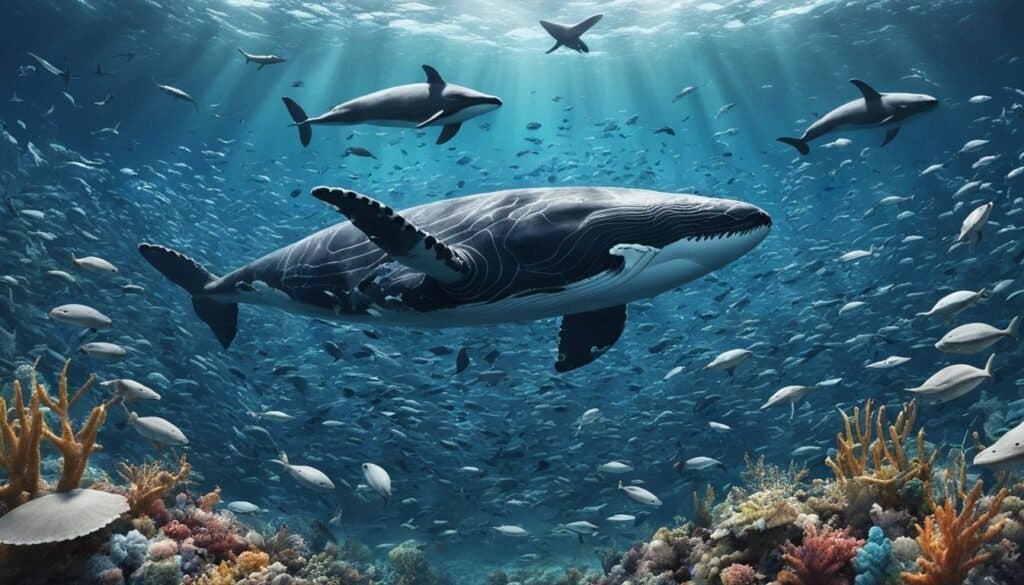
When I delve into the realm of biodegradable products, their touted benefits for our oceans are often overshadowed by the darker reality of persistent toxicity. This is a matter of great concern, reminding us that not all alternatives to conventional plastics offer the environmental salvation we seek.
Persistent Toxicity of Biodegradable Plastics in Marine Environments
The widely held belief that biodegradable materials are inherently safer for our marine environments breaks down upon closer scrutiny. These products, including plastics that claim biodegradability, can carry a concoction of toxic chemicals, their impacts lingering long after they disappear from sight. It’s this enduring presence of hazardous substances that fuels my investigation into the real-life consequences biodegradables have on our oceans.
Comparative Analysis of Biodegradable and Conventional Plastics
I’ve examined a comparative analysis between biodegradable and conventional plastics to distinguish myth from fact. This comparison lays bare the unsettling parallels between the two, with biodegradable products often matching or even exceeding the levels of noxious chemical additives found in their conventional counterparts.
| Aspect | Conventional Plastics | Biodegradable Plastics |
|---|---|---|
| Toxic Chemicals | High levels present | Comparable levels present |
| Biodegradability | Low in natural environments | Varies; often requires industrial composting |
| Environmental Persistence | Extremely long-lasting | May remain intact in oceans |
| Impact on Marine Life | Negative due to ingestion and entanglement | Negative due to similar toxicity |
| Human Health Concerns | Chemicals can enter food chain | Same potential to harm human health |
This thorough analysis has fortified my resolve to call attention to the need for deeper evaluations before branding biodegradable options as the cure-all for our ocean’s ailments. As I uncover these revelations, it’s evident that the journey to safer marine environments is complex and fraught with misdirection, prompting a rally for increased transparency and accountability in the eco-product arena.
Emerging Solutions: Innovative Biomaterials to Replace Single-Use Plastics
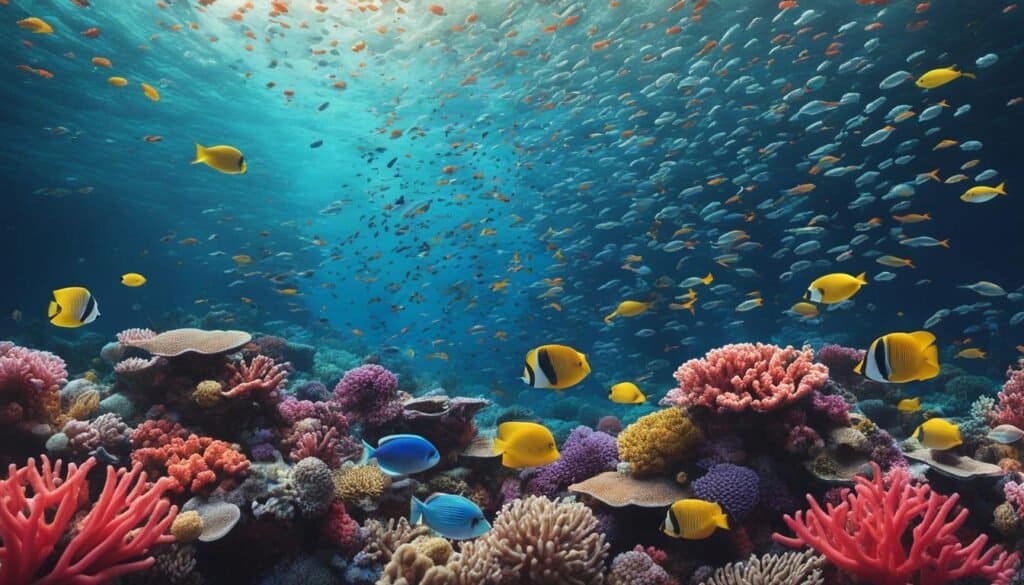
As I explore the forefront of environmental innovation, I’m thrilled to share news from NC State where researchers are paving the way towards environmental sustainability. Lokendra Pal and Lucian Lucia, spearheads of this initiative, are turning what was once waste into a treasure trove of sustainable alternatives, well-poised to tackle the global crisis of plastic pollution.
Imagine a world where our coffee cups, takeout containers, and packaging foams are derived from biomass residues like sawdust powder and agricultural leftovers. These innovative biomaterials not only promise to help in reducing greenhouse gas emissions by diverting waste from landfills but are designed to be compostable, easing the pressures on our waste management systems.
What strikes me as particularly ingenious about these biopolymers is their ability to mimic the properties of traditional Styrofoam, yet their production doesn’t rely on water consumption—a double win for environmental conservation.
- Reduced reliance on single-use plastics
- Integration of agro-residues into product development
- Support for the circular economy through recycling innovations
- Potential reduction in greenhouse gas emissions
These environmentally conscious efforts represent actionable steps toward thwarting the avalanche of problems caused by single-use plastics. By not only focusing on the ‘end-of-life’ for products but also embodying the principle of sustainability from inception to disposal, these emerging solutions may just be the paradigm shift we need to foster a healthier planet. It feels like we’re on the cusp of a green revolution, one where innovative biomaterials redefine our daily convenience and coax us into a more thoughtful relationship with the earth.
Toxicity and Environmental Risks Associated with Single-Use Plastics
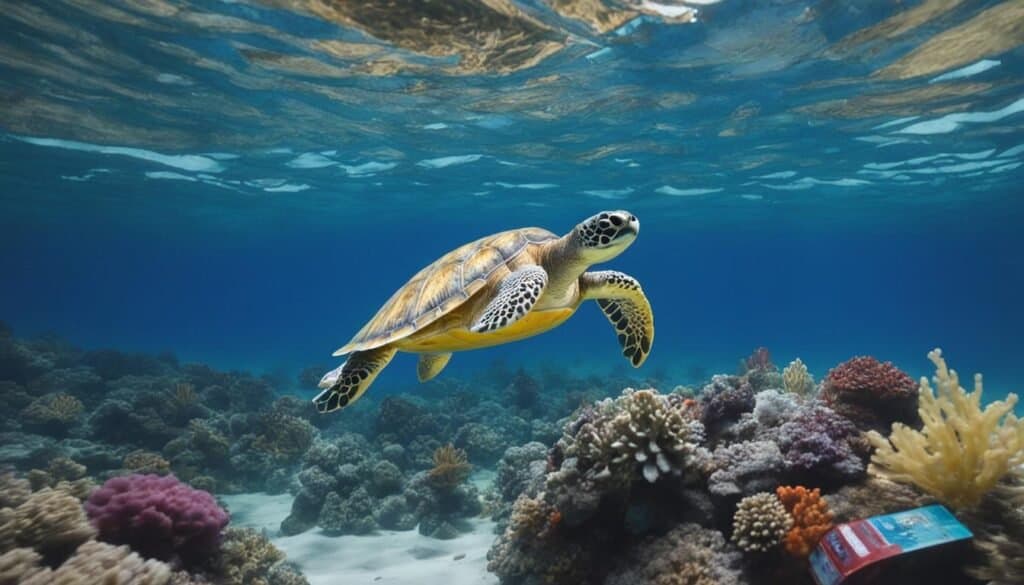
The prevalence of single-use plastics has triggered serious discussions about environmental sustainability and the toxicity of materials that invade our ecosystems. These plastics, including items we use for mere moments, manifest as long-term threats to our planet, wildlife, and communities. As a conscientious observer of our world’s health, the gravity of environmental risks cannot be overstated. The impact of plastic, particularly that which is non-biodegradable and non-recyclable, continues to compromise waste management systems and exacerbate greenhouse gas emissions.
The Threat Posed by Non-recyclable and Non-biodegradable Materials
Materials like Styrofoam serve as a stark reminder of the unintended legacy we leave behind. These non-recyclable and non-biodegradable materials merely facilitate short-term convenience at a devastating environmental cost. Their toxicity remains long after their utility has passed, persisting in landfills and oceans alike, and causing harm that spans multiple lifetimes. It is imperative that we turn our attention to sustainable packaging alternatives that can alleviate the impact of plastic on our planet.
NC State’s Discovery of Sawdust Agro-Residue for Packaging
In the quest for mitigating these environmental threats, innovation shines through. Researchers at NC State have paved the way forward with their discovery of a biodegradable material derived from sawdust agro-residues. It stands as an inspiring example of the potential embedded in repurposing waste into sustainable packaging. This breakthrough is not just about reducing environmental risks; it’s about reimagining the lifecycle of the materials we engage with daily and ensuring they contribute positively to environmental sustainability.
Phys.org reveals a study indicating that biodegradable PLA plastic does not degrade any faster in the marine environment than traditional petroleum-based plastics.
As we continue scrutinizing our consumption patterns and the materials we use, it’s clear that the tide is turning. Biodegradable products, industrial composting techniques, and smarter waste management systems are but a few of the transformative approaches on the horizon. Yet, hope lies not just in the future but in the very present, as researchers and environmental pioneers work relentlessly to fashion a world where convenience does not come at the expense of our precious ecosystems. And I, like many others, stand ready to support and adopt the fruits of such labor towards environmental sustainability.
Biodegradation Experiments: Uncovering the Reality Behind “Compostable” Materials
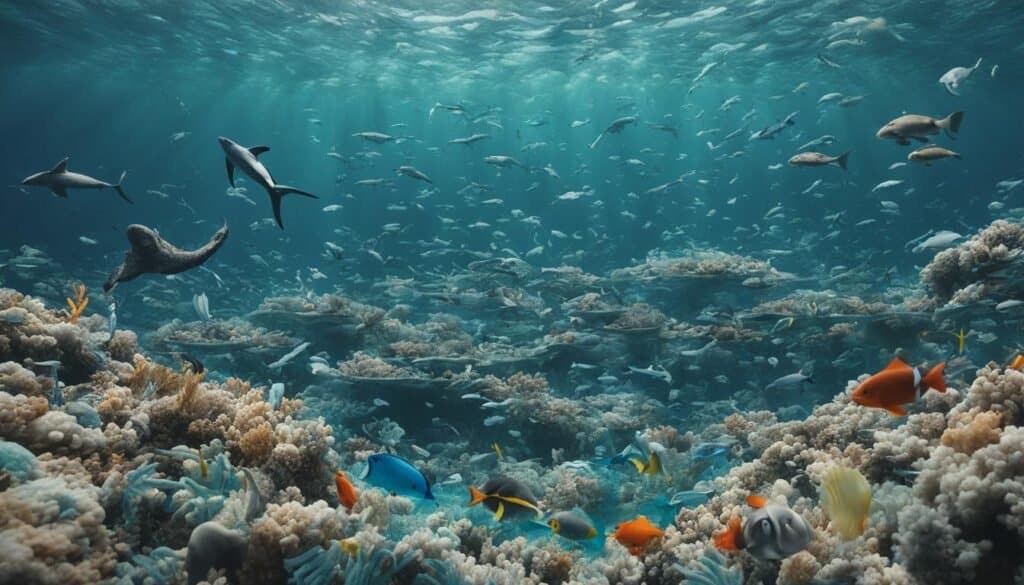
As a journalist devoted to bringing light to environmental issues, I’ve closely followed the compelling biodegradation experiments by the Scripps Institution of Oceanography. Their research dives deep into the lifecycle of Compostable Materials within the Marine Environment. The term ‘compostable’ suggests a product can return to nature, avoiding the fate of Persistent Plastic pollution. But does reality echo the promise?
Synthetic Textiles and Biodegradable Plastics, such as Polylactic Acid (PLA), are increasingly prevalent in consumer goods ranging from Blended Fabrics to packaging. They’re often touted as eco-friendly, but my exploration into recent studies paints a more complex picture – one where products don’t always disintegrate as advertised, especially when introduced to a marine setting.
The studies reveal that PLA, a popular bio-based material, struggles to decompose in oceanic climates. Although a closed-system bioreactor was employed to replicate these conditions, both synthetic and bio-based plastics demonstrated limited breakdown capabilities. On the flip side, we’ve seen that natural cellulose-based materials can vanish within weeks. This inconsistency highlights a crucial need for more thorough Composting and decomposition metrics.
We must address the prevailing assumption that if something is bio-based, it’s instantly better for the environment. While truth lies in the idea that cellulose-based products do degrade faster, implying all bio-based materials act the same is simply incorrect.
Here’s a table summarizing the findings from Scripps Institution’s experiments:
| Material Type | Biodegradation Rate in Marine Environment | Composting Viability |
|---|---|---|
| Natural Cellulose-Based Materials | Rapid (Within Weeks) | High |
| Polylactic Acid (PLA) | Very Slow (Year+) | Moderate (Requires Industrial Composting) |
| Synthetic Textiles | Minimal to None | Low |
What do these revelations mean for us, the consumers? They’re a clear call to action—a prompt to demand greater transparency and to make informed choices in our textiles and plastics. Real change begins with real knowledge, and as a mindful consumer, I feel empowered to champion for materials that are not only kind to my closet but kind to our oceans as well. The message is simple but profound: we need accurate marketing that reflects genuine sustainability. Let’s not fall for the compostable label without understanding the full environmental impact of our choices.
Consumer Choices and the Quest for Sustainable Textiles

As I delve into sustainable fashion, I understand that Consumer Choices are pivotal in steering the Textile Industry towards Environmental Sustainability. It’s clear that there are persistent Public Misconceptions about what constitutes Biodegradable Textiles, and it’s my mission to shed light on the truth behind these claims.
We’ve been led to believe that certain fabrics are kind to our planet, but as I’ve learned from experts, that’s not always the case. The term ‘biodegradable’ has often been touted on tags and in marketing campaigns, creating an illusion of guilt-free consumption. This is where I need to step in and clarify some of these misconceptions.
Public Misconceptions Regarding Biodegradable Textiles
I’ve seen how synthetic and bio-based textiles, such as those containing polylactic acid (PLA), are commonly mistaken for environmentally safe options. The narrative has long been that these materials, once disposed of, would harmlessly return to the earth. However, studies indicate that they contribute just as much to Microfiber Plastic Pollution as their non-compostable counterparts, lingering in our oceans to the detriment of marine wildlife.
Encouraging Adoption of Natural, Cellulose-Based Textiles
My focus now shifts to advocating for genuine solutions that promote a Circular Economy. I’m talking about emphasizing Natural Textiles and Cellulose-Based Textiles, sourced from materials like cotton, wool, and other High-Quality Materials. These textiles not only have a softer environmental impact, but they also serve as exemplary models of durability and style in our closets.
I strongly encourage exploring avenues like Clothing Swaps and harnessing the potential of pre-loved fashion to reduce the demand for new, often unsustainable, clothing production. It’s an exciting, creative challenge to find new life for garments, circumventing the need for more resource-intensive manufacturing.
The truth is, when I make conscious choices about the clothes I wear, from the fiber to the final product, not only am I taking a stand for the environment, but I’m also nurturing a fashion industry that respects the delicate balance of our ecosystems. It’s a powerful statement in a world where ‘fast fashion’ has consequences reaching far beyond our own wardrobes.
Conclusion on Impact of Biodegradable Products on Oceans
As we’ve explored throughout this discourse, the environment faces a global environmental challenge with plastic pollution infiltrating marine ecosystems and threatening our cherished marine life. My deep dive into this pressing issue has unveiled the stark reality that biodegradable products, which we once championed as sustainable alternatives, may not be the silver bullet we anticipated. The dissonance between the perception and actuality of biodegradable plastics means we must glance beyond simple labels and invest in bioplastics that genuinely benefit our oceans.
Innovation is at the forefront of this battle, bringing forth viable solutions to replace the insidious single-use plastics that linger long after their ephemeral utility expires. I am inspired by the relentless pursuit of bioplastic alternatives and the shift in consumer behavior that plays an integral part in the recycling and reduction of plastics. We’ve been awakened to our ability to affect change, and it is through our informed decisions that we can lessen the load bearing down on our marine allies.
Enacting thoughtful policy and effective regulation is paramount, and I am encouraged by the blossoming of education initiatives that propel sustainability forward. It’s clear that if we are to uphold the sanctity of our marine ecosystems, we must embrace the mantle of sustainable stewardship. Let’s journey together towards a future where the shimmering waves of our oceans are free from the bind of pollution, ensuring a bluer, brighter, and more sustainable tomorrow for every creature that calls it home.
FAQ on Compostable Plastic
Q: What is the difference between biodegradable and compostable plastic products?
A: Biodegradable plastics are designed to biodegrade through the action of living organisms. Compostable plastics on the other hand, not only biodegrade but also decompose into humus, which should enrich the compost. Both are considered to be alternatives to traditional plastic, but they decompose in different conditions and at differing rates. It is also worthy to note that not all biodegradable plastics may be composted safely.
Q: How does the use of biodegradable or compostable plastic affect our oceans and marine life?
A: Research shows that biodegradability of plastics, while seeming beneficial, can still cause negative effects in marine environments. When these products breakdown or leach, they release smaller fragments and possibly toxic chemicals that are still harmful to fish and other marine life. Therefore, it can be deduced that the presence of ANY form of plastic, bio-based and biodegradable, or traditional, is damaging to marine ecosystems to some degree.
Q: Is composting a solution to plastic pollution in the ocean?
A: Composting of compostable plastics is a method aimed at reducing plastic waste before it reaches the ocean. However, it’s essential to note that composting would only work if carried out industrial scale and only for compostable plastics. Composting isn’t a perfect solution to plastic pollution in the ocean since not all plastic waste is compostable or is properly composted.
Q: How much plastic waste ends up in the oceans annually?
A: According to the UN Environment Programme, about 8 million tons of plastic waste end up in the oceans annually. It’s a staggering amount, considering that the plastic used in the production ranges from plastic films to other hard plastic products.
Q: What types of plastic are most harmful to marine life?
A: All plastics can be harmful to marine life but microplastics, tiny pieces of plastic material often originating from the breakdown of larger items, cause a considerable threat. These can be ingested by a wide range of marine life, from microscopic organisms to large mammals, and have an array of negative effects.
Q: Are biodegradable plastics better for the environment?
A: The answer to this question isn’t straightforward. While biodegradable plastics break down more quickly than traditional plastics, the by-products and speed of degradation depend on environmental conditions. So, while it might seem a better choice, they can still cause negative effects in certain circumstances, for instance, if they end up in the ocean.
Q: Does reducing plastic in everyday use impact marine life?
A: Absolutely. By reducing plastic use, fewer plastics end up in our oceans and fewer marine animals are at harm’s way. Not only that, but it also reduces the raw materials needed and therefore the energy used in plastic production. Hence, reducing plastic use can have a significant positive impact on our environment as a whole.
Q: How long does it take for biodegradable or compostable plastics to decompose?
A: This depends heavily on the conditions they are exposed to. In ideal industrial composting conditions, full decomposition might be achieved within several months. On the contrary, in an environment like a landfill or the ocean, where these conditions are not met, it can take many years for these materials to decompose fully.
Q: What are some examples of biodegradable polymers used in products?
A: Biodegradable polymers used in products range from polylactic acid (PLA), a polymer derived from corn starch, used in packaging and bags, to polybutylene adipate terephthalate (PBAT), which is often blended with other biodegradable polymers for use in agriculture.
Q: How can we reduce the impact of plastic on our oceans?
A: The most effective ways to reduce the impact of plastics on our oceans are through waste reduction, recycling and finding alternatives to single-use plastic. Education and policies aimed at reducing plastic use are also crucial measures in the fight against plastic pollution.

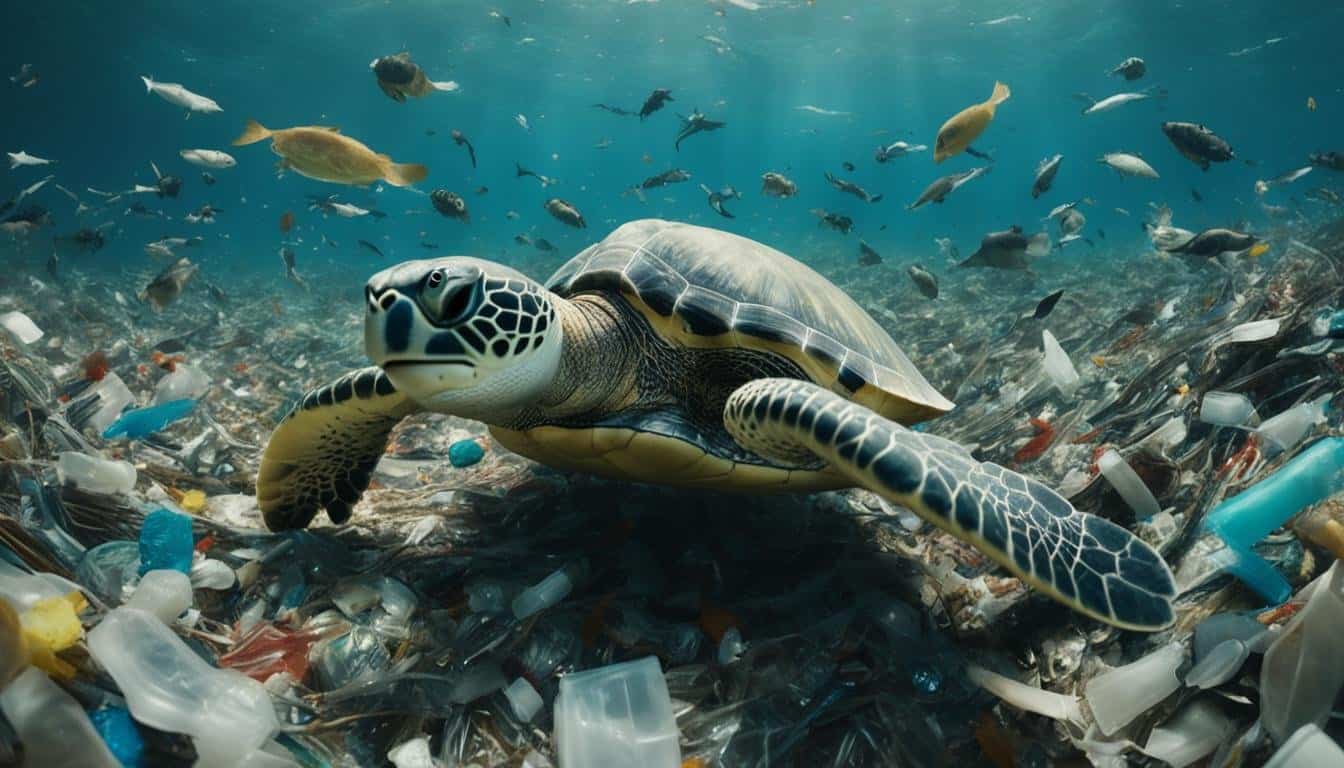



Leave a Reply